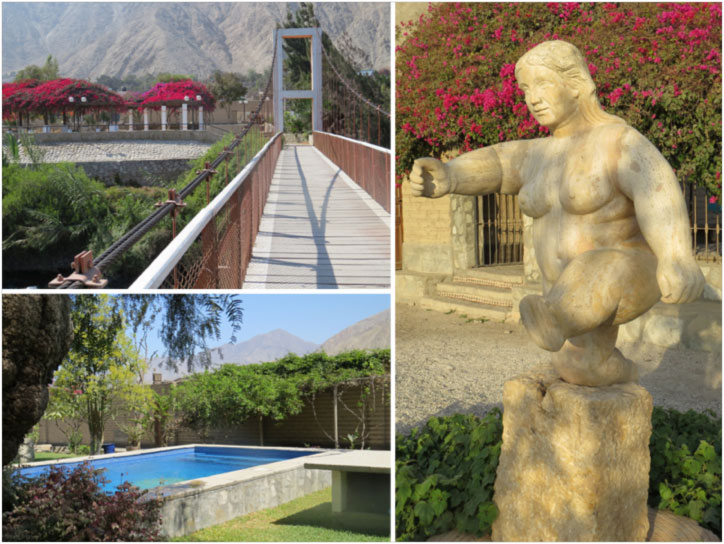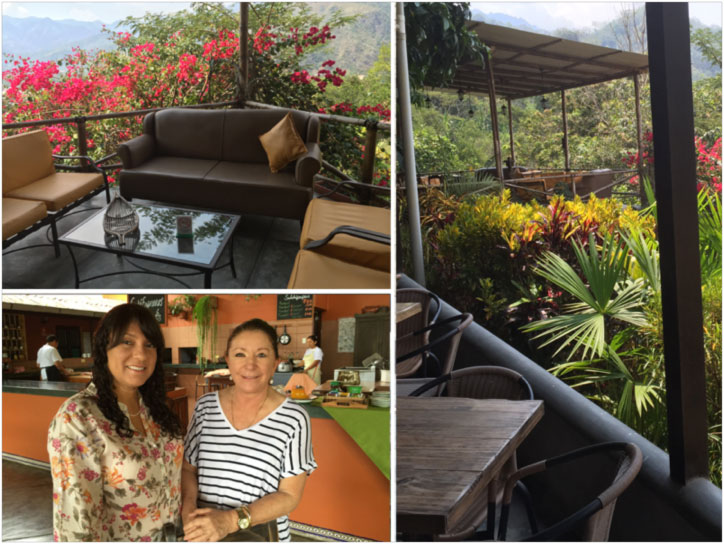
 In 2015 I was contacted by the Canadian Executive Services Organization (CESO), a non-profit organization in Canada that promotes economic development, to do some ecolodge marketing consulting for two Ecolodges in Peru. Having a background in brand building and design, and considerable experience in both social media and digital marketing, my role was to take a look at the digital marketing activities for both properties and provide recommendations and guidance for:
In 2015 I was contacted by the Canadian Executive Services Organization (CESO), a non-profit organization in Canada that promotes economic development, to do some ecolodge marketing consulting for two Ecolodges in Peru. Having a background in brand building and design, and considerable experience in both social media and digital marketing, my role was to take a look at the digital marketing activities for both properties and provide recommendations and guidance for:
- Brand awareness for both properties and their respective regions
- Content strategy for website, blog, and other promotional channels
- Strategy for growing international guests
- Digital marketing strategies and optimization for social media
What I wanted to do in this Ecolodge Marketing Series was to share some of the insights we had, as well as what is going on in digital marketing and social media right now that might help the Ecolodge business in any country get more from their digital marketing and social media efforts. I am not an expert in Ecolodge marketing (you, as an Ecolodge owner, are!), but I do have experience helping many businesses prioritize all the options available to them and leverage the things that work, always aiming to get a 10–15% boost in measurable results.
I have also provided some research around current hashtags and keywords having to do with Ecolodge searches and shares people are making in social media. These were developed using various social media and keyword tools we use in the trade to determine how to improve traffic or initiate an effective social media campaign. Keep in mind the keywords and hashtags provided here are dated to the publication of this series.

Keep These Operating Principles In Mind
I am assuming you have a website, have some experience with social media, and have a staff and some other folks that help you keep it all going.
The strategies and tactics below have been picked based on the efficiency and leveragability in getting you more prospects, leads, awareness, and ultimately more business. Here are the operating principles we adhere to:
Publish Once and Distribute Many
This is a maxim of all “content marketing”. The idea is to leverage the effort put into that one piece of content, whether a great article, blog post, interview, review, photograph, video, or promotion – and place it in as many places as possible to get the largest reach and exposure. Think of your content as a breadcrumb, one that gets found in a place where the fish feed, and leads the prospect to your website, blog, booking platform or sales page.
More Is Always Better
In the world of content, more is always better, because the more articles, videos, photos, ebooks, and other media you have out there, the greater the likelihood of your prospects coming across them. And over time, if you are consistent with your message and putting out quality content, your digital footprint will expand and your brand will have staying power for years to come. Digital content is not going away, and it certainly won’t be antiquated overnight – keep publishing.
Going Where The Competition Isn’t
Because there are so many channels for content, some more well known then others, it’s possible to get an unfair advantage by jumping into a platform that has not been saturated. Amazon is one of those platforms, more on that later in this series.

Have A Consistent Brand Message
Because digital media gets distributed so widely and is shared instantaneously in all its different formats, its important to have a very strong value proposition along with consistent branding. And by branding I mean more than just your logo. You have values that are important to you and the planet, so make a point of communicating about them. Ultimately you want to confirm your belief in the brand values you convey by investing time and money in them.
Optimize and Acquire
There are two drivers for all of the tactics that follow, and they are Optimization and Client Acquisition.
- Optimize for a 10% – 30% Increase in Results
What online marketing activities are generating bookings and creating awareness for your ecolodge? By optimizing what is already working we implement strategies and tactics that can generate a 10% – 30% increase in the results those activities generate.
- Increased Client Acquisition
Marketing activities have to be looked at in light of what they are achieving. Client acquisition is about attracting and booking new guests.
The Other Side of Peru
Machu Picchu and Cusco are popular tourist destinations in Peru. What’s interesting is that 60% of the tourists who have visited both of these locations are looking for other regions of Peru to explore. The two ecolodges I visited are in regions definitely worth exploring – one on the river in the desert west of the Andes Mountains, and the other in a valley in the rainforest to the east of the Andes.

||||||||||||||
Refugio de Santiago Ecolodge, a restored country house, is about 2 hours southeast of Lima in the Lunahuanã Valley west of the Andes. It has 8 rooms, a pool, an extensive organic garden with over 300 species of plants, 90 species of fruit trees, and access to hiking trails and rafting in the Cañete River. Guests can learn about traditional Peruvian medicinal plants and enjoy views of the surrounding hills and Incawasi ruins. The kitchen features fresh food from the garden as well as local fish and guinea pig, a Peruvian delicacy.
Silvana de Briceño and Fernando Briceño Belleza, the proprietors, purchased the property 15 years ago in order to renovate it. They became enchanted with the area after appreciating not only the lushness of the fertile Lunahuanã Valley, but the history and heritage of the region. The business has grown to receive visitors not only from Peru (primarily Lima), but from France, Germany, the Netherlands, and more.

||||||||||||||
Fundo San José EcoLodge is located in the Chanchamayo Valley, which is located on the eastern side of the Andes in the rainforest. It sits in the heart of a 43 hectare private ecological reserve, overlooking the town of La Merced. For more than 7 years, the Lodge has been pioneering sustainable tourism. It has actively involved neighboring Ashaninkas communities and has encouraged their suppliers to comply with sustainability criteria. Fundo San José EcoLodge has 10 bungalows surrounded by virgin forests and fields of fruit trees.
Carmen Brocq Tremolada, whose family originally owned a farm and the surrounding land at the beginning of the century, has developed an ecolodge experience that includes a rainforest jungle nature trail, butterfly hatchery, and a variety of educational experiences about the rainforest environment. The kitchen features local fresh fruit and vegetables in all its dishes. Marlene Iannacone Oliver is in charge of marketing, promotion, and social media.
Both of these properties have excellent ratings in Booking.com and Trip Advisor. They have dedicated websites, social media campaigns, and other established marketing practices in place.
Ecolodge Marketing Tactic #1: Brand Your Region or Special Place

Sometimes tourist destinations are not in a region that is recognized, or in the shadow of one that is famous. Popular destinations in any country get all the visitors and press while fabulous destinations that don’t have that reputation end up being wall flowers.
Both of the valleys Fundo San José and Refugio de Santiago are in are such places. You might call this area The Other Side of Peru. You could have a wonderful branding campaign to promote the rest of Peru with that phrase. Another approach: “Peru Undiscovered”!
Lunahuanã Valley
Some people have a bone to pick with the Incas, in that they weren’t the only ancient civilization in Peru! It’s just that they were the most aggressive in promoting themselves, being “children of the sun”. In fact, Peru has over 8 different ancient civilizations to explore, and that is a huge historical asset.
One of the main features of the Lunahuanã Valley are the terraces. These are canals that were built in the 5th century that start at the top of the Cañete River. They divert water down through the valley behind all of the farms and orchards. Refugio de Santiago just has to open their floodgate to completely water the property.

The way to make a destination memorable is to give it a name. As an example, The Great Wall of China is a tourist destination. If we examine the name in detail, “great” implies “historic” and “large”. “Wall” tells you what it is, and “China” places it on the map. Why not do the same with the terraces of the Lunahuanã Valley? Call them “The Great Terraces of Peru”. Now you have a place to visit and a story to tell.
Think about creating the brand of a particular place or destination in your area. Create a description that people will remember, so that they make it a priority on their bucket list. Obviously this is not something that will happen overnight, but the time to start is now. If you are doing any content marketing for your lodge, that might be the place to talk about it and promote it.